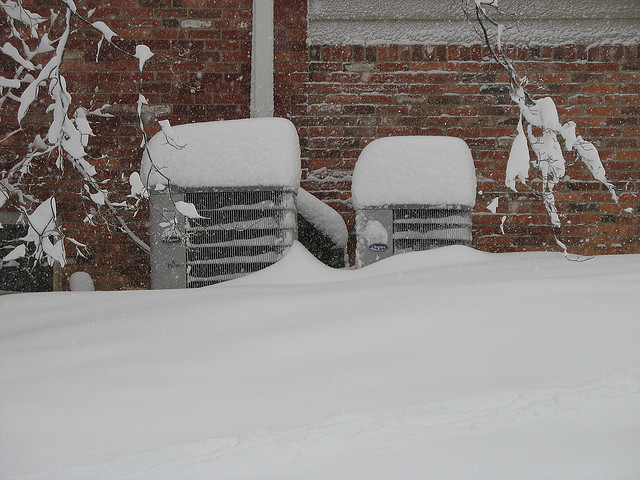The Air Conditioner Pipe Is Completely Frozen - What Do I Do? Guidance for Resolution
The Air Conditioner Pipe Is Completely Frozen - What Do I Do? Guidance for Resolution
Blog Article
This post in the next paragraphs in relation to Have a Frozen AC Line? Here’s How to Fix It is without a doubt motivating. Don't miss out on it.

Intro
Discovering that your air conditioning pipeline is frozen can be concerning, particularly during warm summer months when you depend on your air conditioning unit one of the most. Comprehending what to do in such a scenario is essential to avoid additional damages to your cooling system and ensure your convenience inside your home.
Recognizing the Causes
Numerous aspects can add to the freezing of an air conditioning pipe. Recognizing these causes can aid you resolve the concern efficiently.
Absence of Airflow
One typical source of a frozen AC pipeline is inadequate airflow. When the air flow over the evaporator coil is limited, it can create the coil to go down below freezing temperature, causing ice development on the pipeline.
Reduced Refrigerant Levels
Insufficient refrigerant levels in your air conditioner system can likewise cause an icy pipeline. Low refrigerant levels can create the stress in the system to go down, bring about the cold of moisture on the evaporator coil.
Winter Conditions
In chillier climates, freezing temperatures outside can contribute to the freezing of air conditioner pipes. If your air conditioning unit is not correctly insulated or if there are leaks in the ductwork, chilly air can infiltrate the system, causing the pipeline to ice up.
Dirty Air Filters
Unclean or clogged up air filters can restrict air movement in your air conditioner system, causing different issues, consisting of an icy pipeline. It's essential to change or cleanse your air filterings system regularly to make certain appropriate air flow and avoid ice accumulation.
Indicators of a Frozen Air Conditioner Pipe
Identifying the indicators of an icy air conditioner pipeline is important for timely action.
Minimized Airflow
If you observe a considerable decline in air flow from your vents, it might indicate an icy pipeline.
Ice Buildup on the Pipe
Noticeable ice buildup on the refrigerant line or the evaporator coil is a clear sign of an icy a/c pipe.
Weird Sounds from the Unit
Uncommon sounds, such as hissing or bubbling, originating from your air conditioning device can indicate that there's ice existing on the pipe.
Immediate Actions to Take
When faced with an icy air conditioning pipeline, it's necessary to act promptly to avoid further damages to your air conditioning system.
Turning off the air conditioner
The initial step is to turn off your air conditioning system to avoid the system from running and exacerbating the issue.
Looking for Blockages
Examine the area around the interior system for any type of blockages that might be obstructing airflow, such as furnishings or curtains.
Thawing the Pipe
You can make use of gentle methods like putting towels soaked in cozy water around the frozen pipeline to aid thaw it gradually.
Safety nets
Taking safety nets can help prevent future incidents of a frozen AC pipe.
Regular Maintenance Checks
Schedule normal upkeep checks with a professional HVAC technician to ensure that your air conditioner system is running effectively.
Changing Air Filters
Frequently replace or cleanse your air filters to prevent air movement restrictions and maintain ideal performance.
Protecting Exposed Pipes
If your air conditioner pipes are revealed to cold temperatures, take into consideration insulating them to stop freezing during winter season.
Looking For Professional Help
If DIY techniques stop working to resolve the issue or if you're uncertain about just how to continue, it's finest to seek assistance from a qualified HVAC technician.
When DIY Methods Fail
If your efforts to thaw the pipe or address other concerns are not successful, it's time to employ a specialist.
Relevance of Hiring a Professional HVAC Technician
A qualified HVAC service technician has the experience and devices needed to detect and fix concerns with your AC system securely and effectively.
Conclusion
Handling a frozen air conditioning pipe can be a discouraging experience, yet understanding exactly how to respond can aid reduce damage and restore convenience to your home. By recognizing the causes, acknowledging the indications, and taking timely action, you can properly address the concern and avoid future events.
Frozen AC Line: Why It Happens & What To Do About It
A frozen AC line can be a rather peculiar sight in a place like Phoenix, Arizona where nothing ever freezes. In this post, we’ll discuss what makes an air conditioner line frozen – and what you can do about it.
Dirty Air Filters
Did you know that you should be cleaning or replacing your air filters on a monthly basis? Failing to do this can result in airflow issues that, in turn, cause your evaporator coils and lines to freeze over. You’ll notice a buildup of ice on both components, although the buildup on your pipes will, of course, be more evident unless you open your air condition up to reveal the coils.
What To Do About It
Give your air filter a good cleaning if it’s reusable. If not, replace the filter outright. Next, switch your air conditioner’s fan setting on and leave it there for 2-3 hours. This will draw warm air in, helping to thaw your evaporator coil. You can also check out this article for some tips on cleaning the coils themselves if you’d like to speed the process up. Before you switch the unit back to its normal state, make sure the supply vents are completely unobstructed and free of dust or other debris.
If you keep having this issue even after replacing your filters regularly, contact a local HVAC repair company and have them inspect your evaporator coil, ductwork, and any other components that may be at fault. If you live in the Phoenix, Arizona area, give American Home Water and Air a call.
Low Refrigerant Levels/Leakage
What To Do About It
Contrary to what air conditioner “recharge” companies often tell their clients about refrigerant, it should never need to be simply refilled. You see, refrigerant runs in what experts refer to as a “closed loop.” Refrigerant really shouldn’t be leaving that loop. If it is, you’ve got a leak.
Paying someone to come and pump more refrigerant into your system (aka “recharge” it) isn’t the solution. Doing that will simply kick the can down the road. Besides, refrigerant leaks can be harmful to the environment and people in your home.
Rather, you need to take care of the leak with the help of a technician. Check out this article for some more information about dealing with air conditioners that are leaking refrigerant. Before you contact a technician, switch your thermostat to the off position. Then, switch the fan setting on and let it run for 2-3 hours so the unit can thaw.
Improper Temperature Setting
Improper temperature settings can also cause a drop in your air conditioner’s pressure. What many people don’t realize is that air conditioners are actually designed to run when temperatures have fallen above roughly 60 degrees Fahrenheit. If you run the unit when it’s cold outside, you’ll run into many issues, including frozen components.

I stumbled upon that write up about Have a Frozen AC Line? Here’s How to Fix It when surfing around the search engines. Loved our posting? Please share it. Let others find it. I take joy in reading our article about How can I fix an air conditioner’s frozen pipe?.
Schedule Service Pickup Report this page